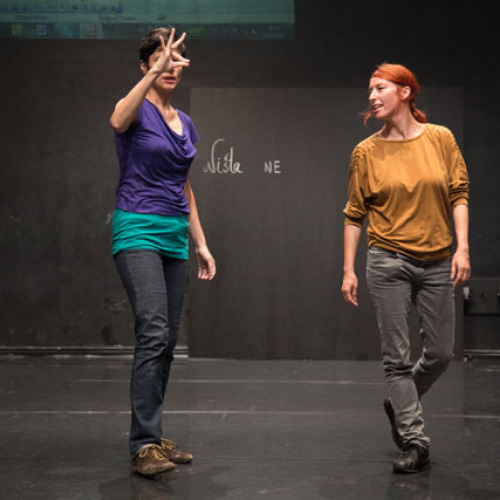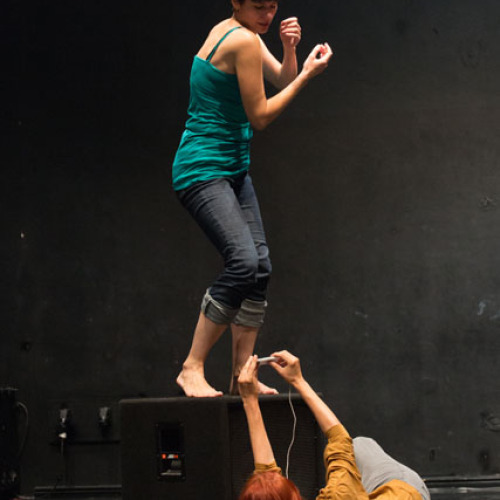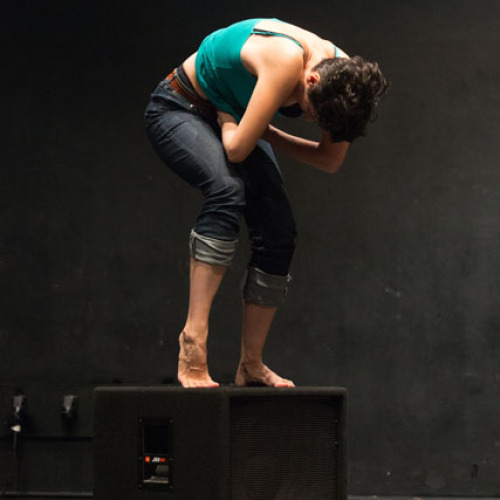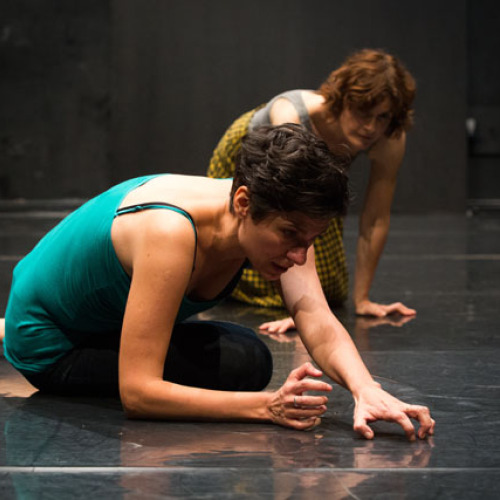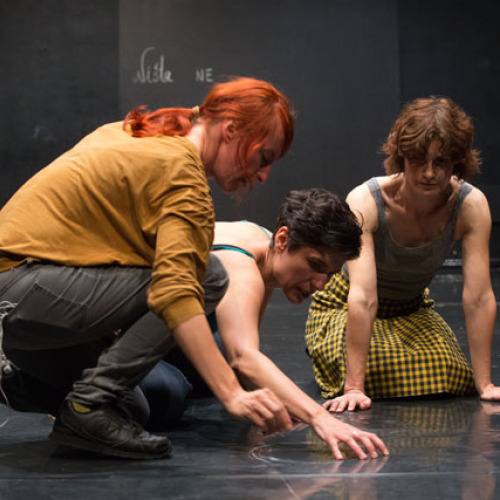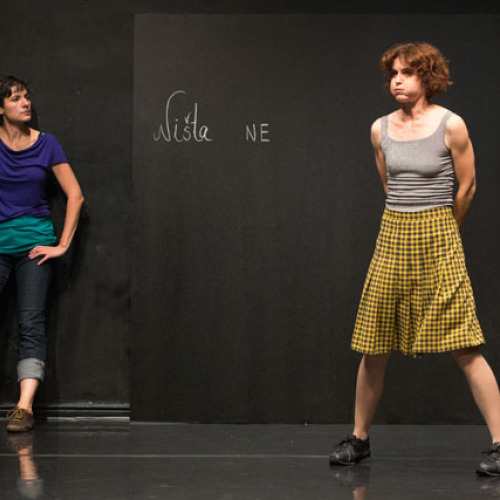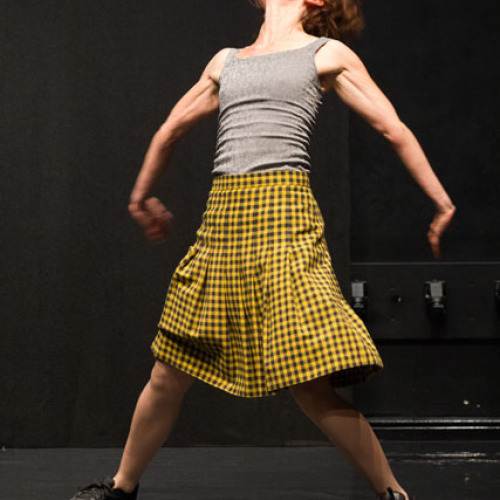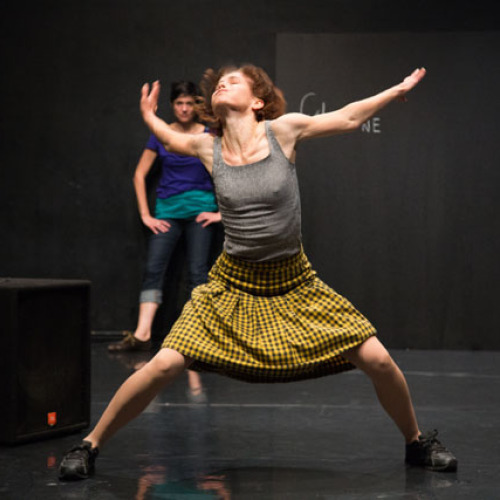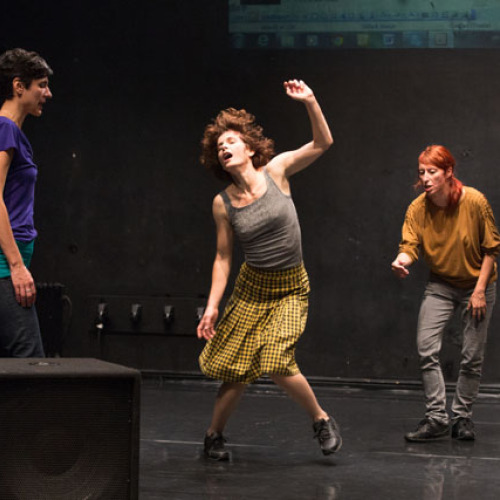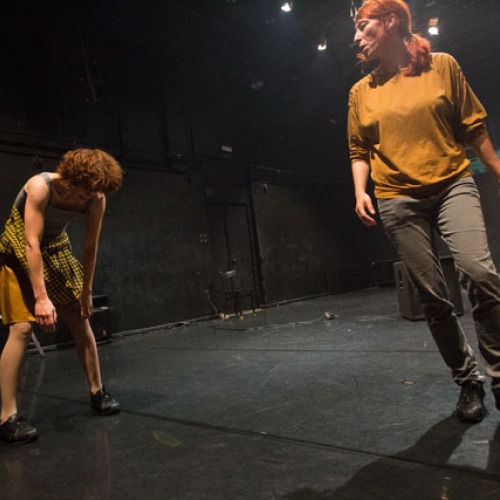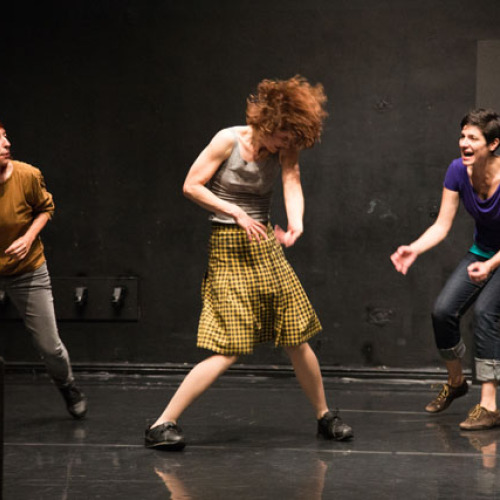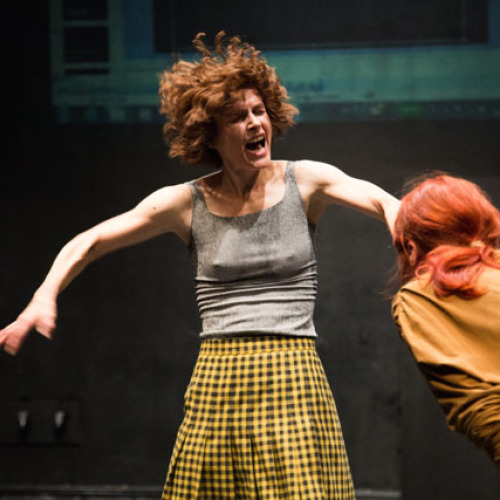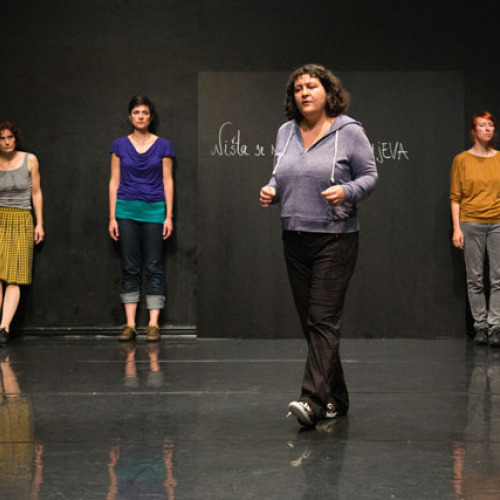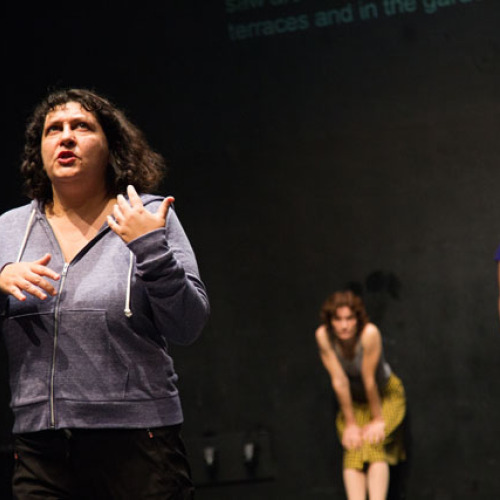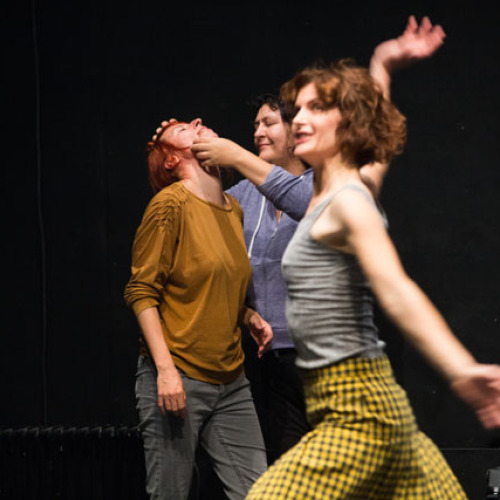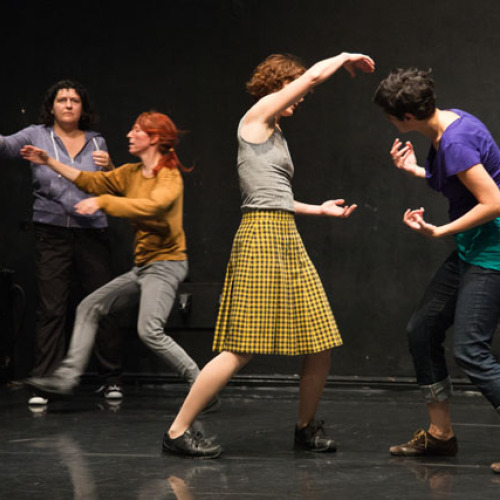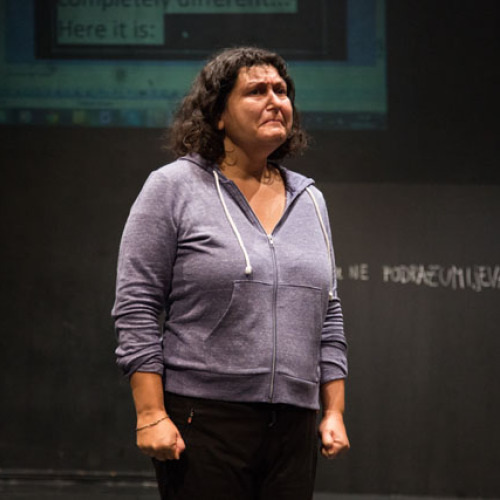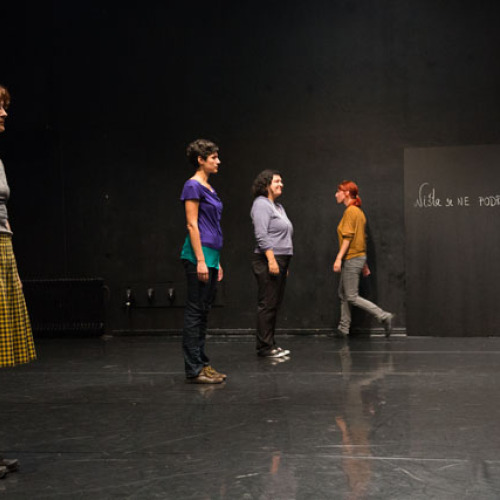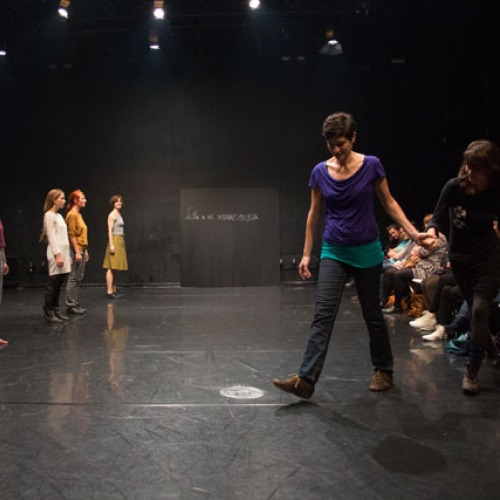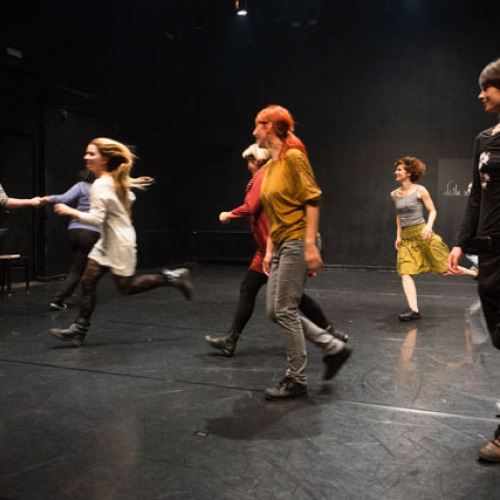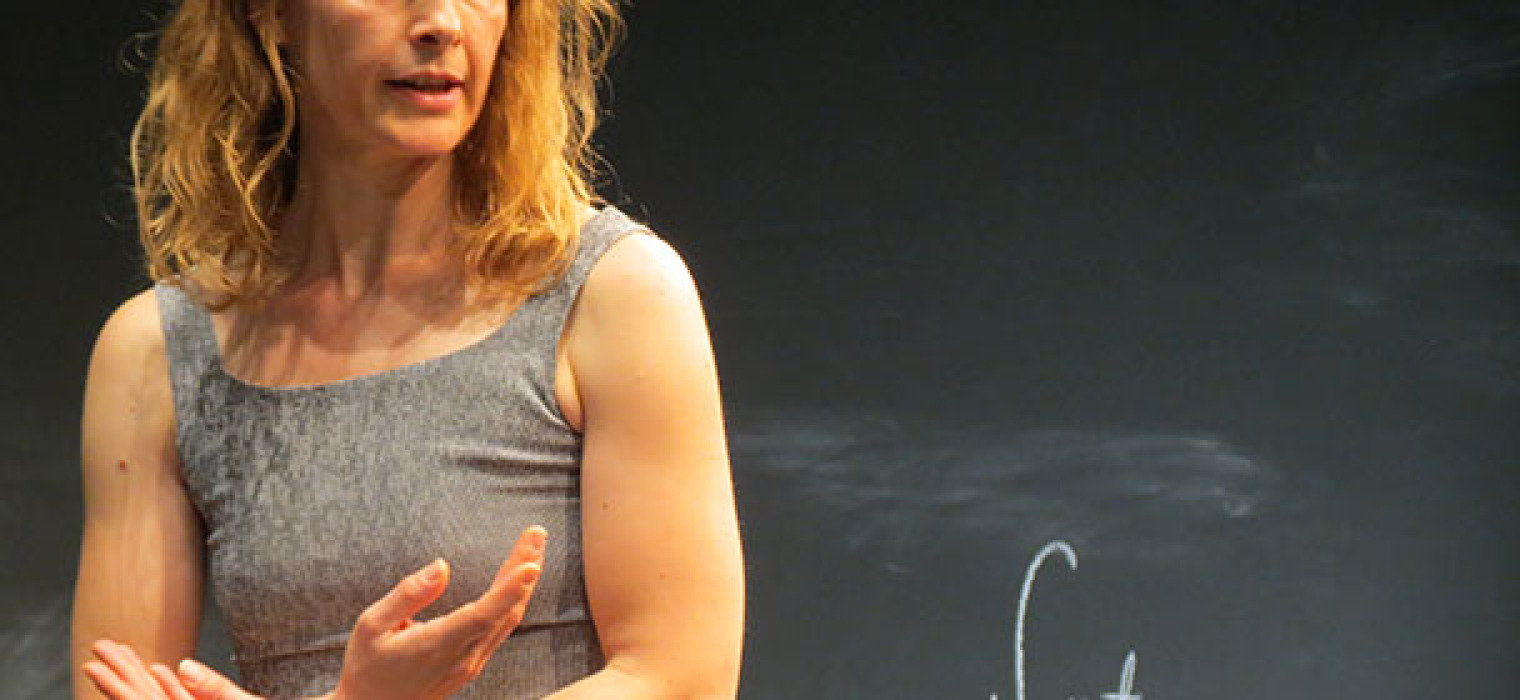
A Wonderful, Wonderful, Wonderful Disaster
“Either endure the minimum or demand
the maximum?”
Even before we entered the dance
hall as the authors of the potential performance A Wonderful, Wonderful, Wonderful Disaster, the five of us women
(Selma Banich, Deana Gobac, Nataša Govedić, Roberta Milevoj, Iva Nerina
Sibila), who all come from very different spheres of artistic creation, were
primarily interested in in the exact frameworks that we were getting ourselves
into. Do we have the “keys to the city” in which we perform? Who do these
institutions’ keys exactly belong to? Why can we rehearse in the private Tala
Dance Centre financed through the organisation of dance classes and workshops
and not in the facilities declaratively funded by the city authority to provide
space for art research that, as a matter of fact, give priority to the
commercial, often festival-oriented projects? Should we then dance in the
street (to found Zebra Dance Centre), in the public library, in the shopping
mall, at places still considered “commons”, or should we conform to the
hierarchical interpretation of public institutions claiming that the keys to
the city space belong only to the authority and by no means to citizens?
And should we keep on working,
endure over and over again, count primarily on being accustomed to our never-ending
poverty and minimal work conditions even when we know in advance that the
production of a potentially most challenging or acclaimed dance performance is
going to die after a few performances – simply because the independent scene in
Croatia still hasn’t managed to acquire any repertoire continuity within the
“party” nomenclature of local and state authorities for whose officials art is
pretty much the same as sport? Culture industry managers are only interested in
the sponsorship potentials of an individual event, in a spectacle attracting a
huge audience and nothing whatsoever in research, multilayer or politically
“non-standard” work. In such a context (and context is always a half of an
artwork), what is “our space”? And should we squat the institutions with empty
halls given the impossibility to negotiate opening them up? How does it come to
pass that five women with distinguished art biographies fully depend on
friendship relations with other women and not on the support of any
institutional network regarding rehearsals and performances? This is, at the
same time, the true potential of the performance. This is the experience of Iva
Nerina Sibila:
“The performance
format is of crucial importance. I can no longer accep
theatre or broader
art projects produced in a way
that supports
political or economic violence. This is
the problem,
because a certain segment
of art production
is consequently excluded, and art cannot follow blindly
changes in a society but rather must incite
them.”
The violence of the usual
identification with offered models of performance is so strong that we were
nearly constantly asking ourselves whether it is even at all possible to step
out of a performance ideology that in so many well-coordinated ways forces us
to hold on to “recognizable” language. If Geraldine Harris – whose study of
staging femininities draws attention not only to the cruelty of the most often
used models of theatrical performance but also to the cruelty of challenging
them – is right, the performance format is probably the most important decision
we make. Harris (Staging Femininities:
Performance and Performativity, 1999, p. 78):
“However, as many critics, including Feral,
have pointed out, Brecht’s theory
implicitly places both the performer and the
author (Brecht) ‘outside’
the fiction in a position of ‘mastery’,
implying the existence
of a stable subject position from which to
quote
the character and indeed from which to
represent ‘social reality’.
The audience is then presumed to identify with
the author
or actor, who are constructed as knowledgeable,
objective
observers of social reality for whom the
contradictions
have actually already been resolved.”
This confident voice is totally
contrary to the non-privileged, research, action-wise multiple female
experience of the authorial quintet that gathered around the A Wonderful, Wonderful, Wonderful Disaster project.
The very notion of a “disaster” can be interpreted as some sort of intentional
break of domination, “adeptness”, control and representational visibility,
either of the “social reality” or of the individual voices and bodies that
channel it.
The new layer of the performance is
the constant incorporation of new female voices: all of us, be it dressmakers,
musicians, tram drivers or professional prompters, seem to share the experience
of “yet another survival of a previous (bare) survival” but also the opposition
against this continuous reduction to a creative minimum, the opposition to the
logic of “yet another gritting of one’s teeth” because of accumulated political
disasters, opposition against the “reduction” of women’s power to first aid and
caring for the wounded.
We strived to fight this “global
hospital” with all available means, trying to create a true City of Women, a City of Solidarity,
a city to listen to and respect mutual fears, passions and differences. (Nataša
Govedić)
Concept, choreography, performance and production: Selma
Banich, Deana Gobac, Nataša Govedić, Roberta Milevoj, Iva Nerina Sibila
(Institute for Catastrophe and Chaos) Sound and music advisor: Nenad Hrgetić
Translation and subtitles: Aleksandra Mišak
Organization: City of Women; In
collaboration with: Dance Theatre Ljubljana.
Supported by: Ministry of Culture of the Republic of Croatia,
EU Culture.
Price: € 7, € 5 (students and pensioners upon
submission of an identity card, and self-employed in culture), unemployed free
entry.



